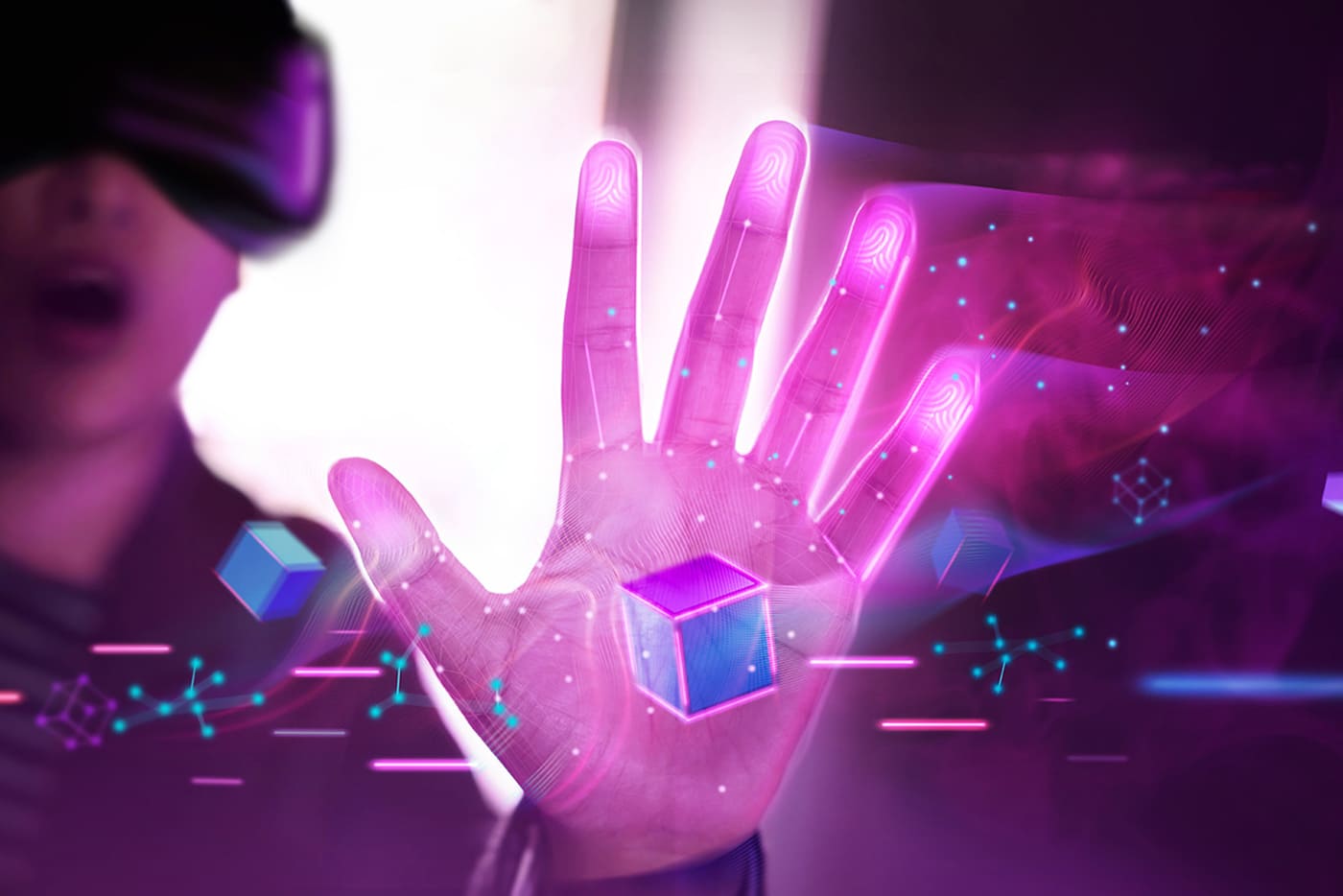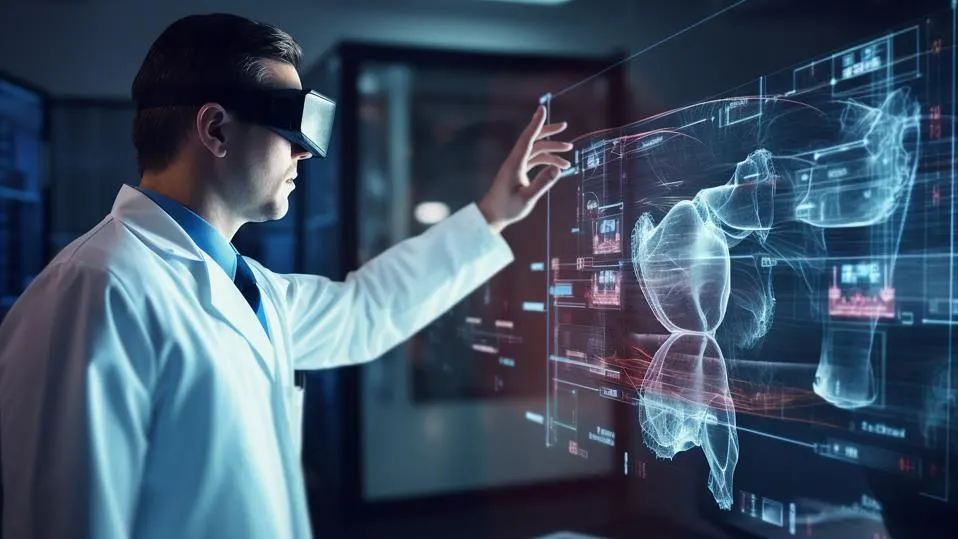How Will the Metaverse Transform Healthcare?
21 April 2022
The metaverse has the potential to lead to breakthrough technologies for healthcare. Find out how immersive innovations can help patients and doctors improve health outcomes.

The metaverse has the potential to improve all aspects of healthcare, from virtual wellness to mental health to complicated surgical procedures.
Web 3.0 technologies like artificial intelligence, augmented reality, virtual reality, and the Internet of Medical Things are already being used to do things like train front-line pandemic workers and relieve symptoms of post-traumatic stress (PTS).
Let’s explore some of the ways the metaverse will be the next frontier in the healthcare sector.
Telehealth
Research by McKinsey indicates that the use of telehealth increased 38x from the pre-pandemic baseline to 2021.
The metaverse will enable us to expand on traditional telemedicine services. In the metaverse, healthcare providers will be able to effectively virtually examine patients, and potentially diagnose certain health conditions.
Metaverse telehealth consultations will also mean patients won’t need to be limited to healthcare professionals in their geographic location. Patients in the U.S. could see specialists in Australia, and vice versa – all that’s needed is for the patient and the provider to have headsets. This is particularly helpful in areas of the world where there is a shortage of medical professionals or where people have trouble accessing care.
Medical Training and Education
The metaverse will offer new opportunities for highly immersive medical education and training.
Students and trainees could examine the anatomy of a human body in a virtual reality educational environment, and the possibilities for solving problems, building creativity, and creating learning spaces in the metaverse are practically limitless.
The World Health Organization's state-of-the-art learning center, The Academy, launched a new feature in their training application that uses AR to show health workers how they can stay safe when working with COVID-19 patients. The app demonstrates the proper way to put on and remove personal protective equipment (PPE).
During the demonstration, a learner can see a figure putting on and removing PPE, and then actually direct the figure’s movements, therefore “learning by doing” instead of simply watching a training video.
The medical imaging software company Novarad Corporation released their OpenSight™ Augmented Reality System for Education, which gives students and teachers an immersive experience of any donor studies that can be performed with a CT machine. Using a Microsoft HoloLens 2 headset, students can manipulate holograms using voice commands to show organs, bones, and soft tissues.
Healthcare providers will also be able to use digital twins – virtual models, or simulations, of processes, objects, or systems – to develop “test dummies” for individuals. They could use these digital twins in the metaverse to predict how patients will react to medications, recover from illness, or rehabilitate after surgery.
Surgery in the Metaverse
Surgeons are already using AR, VR, and AI technology to perform minimally-invasive surgeries. With these immersive technologies, medical professionals get a 3D view of a patient’s body that helps them plan and perform operations.
AR and VR simulations in the metaverse are also a safe way for surgeons-in-training to hone their craft and face various technical challenges and complications. A surgeon can even get a head-up display during an operation, so they don’t need to look away from the patient on the table to see screen data or images.
Metaverse Mental Health Treatment
The metaverse has the potential to revolutionize mental health treatment. Psychiatrists and psychotherapists could use the immersive experiences in the metaverse to treat issues like:
- PTS
- Anxiety disorders
- Delusions
- Psychosis
- Hallucinations
- Eating disorders
Additionally, the metaverse could provide access to mental health care for disabled people or people who deal with geographic barriers to getting care.
Related Articles
11 Most Reliable AI Content Detectors: Your Guide To Spotting Synthetic Media
Since the launch of ChatGPT just two years ago, the volume of synthetic – or fake – content online has increased exponentially.[...]
The AI-Powered Citizen Revolution: How Every Employee Is Becoming A Technology Creator
Something remarkable is happening in organizations around the world.[...]
6 Mistakes IT Teams Are Guaranteed To Make In 2025
The next wave of artificial intelligence isn't just knocking at enterprise doors - it's exposing fundamental flaws in how organizations approach technology transformation.[...]
2025’s Tech Forecast: The Consumer Innovations That Will Matter Most
Consumer technology covers all of the tech we buy to make our lives more convenient, productive or fun.[...]
7 Healthcare Trends That Will Transform Medicine In 2025
Healthcare has evolved dramatically in recent years, with technology driving countless new opportunities, just as demographic and societal factors have created new challenges.[...]
Sign up to Stay in Touch!
Bernard Marr is a world-renowned futurist, influencer and thought leader in the fields of business and technology, with a passion for using technology for the good of humanity.
He is a best-selling author of over 20 books, writes a regular column for Forbes and advises and coaches many of the world’s best-known organisations.
He has a combined following of 4 million people across his social media channels and newsletters and was ranked by LinkedIn as one of the top 5 business influencers in the world.
Bernard’s latest book is ‘Generative AI in Practice’.










Social Media